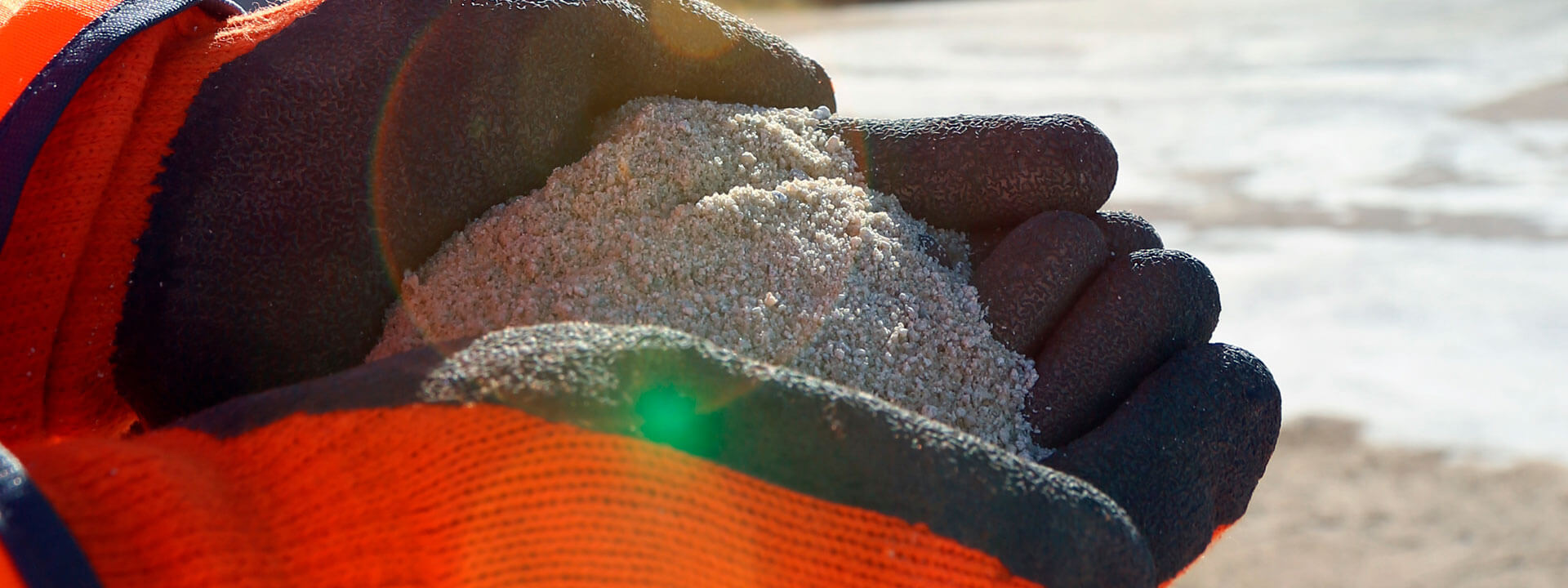What is Concrete?
A blend of aggregates bound together by a hydraulic binder.
Concrete is an engineering material that simulates the properties of rock and is a combination of particles closely bound together.
It is simply a blend of aggregates, normally natural sand and gravel or crushed rock. These are bound together by a hydraulic binder e.g. Portland Cement and activated by water to form a dense semi-homogenous mass.
Because of its general characteristics concrete is sometimes referred to as artificial rock. Concrete is very strong in resisting compression. In use where tensile stresses have to be accommodated reinforcement is incorporated into the concrete to absorb tension. Concrete is the most widely used construction material. It allows flexibility in structural form as it can be moulded into a multiplicity of shapes.
Discover our concrete range today
Did you know?
- Concrete is the second most-used material on Earth after water
- Concrete production contributes 5% of annual anthropogenic global CO2 production
- Concrete in the middle of the Hoover Dam, opened in 1936, is still drying out!
- The largest ever, unreinforced concrete dome construction is the Pantheon in Rome, which is over 2000 years old
- Cement, if sealed in a thermos flask with water, will reach boiling point
- 99% of all ‘cracked’ concrete is associated with other construction factors and not the material as delivered
- Concrete is an extremely inexpensive material when you consider what it does. For example: 1m3 of concrete = 1000 litres of product. If you were to buy the same volume of paint, you would pay a lot more, and it wouldn’t be as durable
- Concrete sets and hardens underwater
- Concrete actually has elastic properties
- A ready-mixed concrete plant can have in excess of 2000 mix recipes available
Read on to become an expert on concrete, including its composition, types, benefits, and uses. Contact our team for guidance, request a quote, or explore our range of ready-mixed concrete today.
What is concrete made of?
Concrete comprises three primary components: aggregates, a binder, and water. Aggregates, such as sand, gravel, or crushed stone, provide volume and structure. The binder, often Portland Cement, reacts with water to create a paste that binds the aggregates together, forming a solid and durable material.
In some cases, additives like plasticisers or air entrainers enhance specific properties, such as improving workability or frost resistance. This customisation makes concrete suitable for various applications, from domestic foundations to large-scale infrastructure projects.
How is concrete different from cement?
The distinction between cement and concrete becomes clear when understanding their compositions and uses. Cement is a fine powder made from limestone and clay, acting as a binding agent, while concrete is a versatile building material created by mixing cement with water, sand, and rock.
Although closely related, they are not the same, cement is an ingredient in concrete, rarely used on its own in construction. Concrete, as a composite material, provides the strength and versatility needed for most structural applications.
For guidance on specific uses of general-purpose concrete, check out our How to Lay a Concrete Base guide.
Common uses of concrete
Concrete plays a vital role in shaping our everyday lives, often supporting structures and spaces we rely on without a second thought. Its durability and versatility make it indispensable for many applications.
For example, concrete driveways are a popular choice for their ability to withstand heavy impact and pressure, adding long-term value to homes. Additionally, pavements crafted from concrete provide safe and reliable walkways in cities and neighbourhoods, enduring high footfall in bustling areas like city centres and transport hubs. Roads, too, benefit from concrete's resilience, offering the strength needed to endure years of heavy traffic, from busy city streets to quieter rural roads.
Concrete’s practicality extends to parking lots, which benefit from its long-lasting nature, reduced maintenance costs, and improved aesthetics. It also provides a firm foundation for buildings, ensuring structural stability and resistance to fire, rot, and extreme weather.
For mid and high-rise buildings, concrete is the material of choice, offering unmatched safety, energy efficiency, and durability. Whether it’s supporting our homes, roads, or workplaces, concrete remains the cornerstone of modern infrastructure.
Use our concrete calculator to determine the volume of ready-mixed concrete you need for your project.
How concrete is made
Concrete is made by mixing Portland cement (10-15%) and water (15-20%) to form a paste, which is then combined with aggregates (65-75%) such as sand, gravel, or crushed stone. This mixture hardens as the cement and water chemically react, binding the aggregates into a durable, rock-like mass. The production process typically occurs at a batching plant, where automated systems ensure precise proportions for consistency and quality.
The process begins with measuring the required amounts of cement, water, and aggregates. The dry materials are mixed before adding water to activate the binder, creating a uniform paste. Once prepared, the concrete is transported to the construction site, where it is poured into formwork.
Proper curing is essential to ensure the concrete reaches its full strength and durability. This involves maintaining the right moisture and temperature levels to allow the chemical reaction between cement and water to fully develop.
Learn how how to prepare for a concrete pour.
The benefits of using concrete in construction
Concrete is a widely used material in the construction industry due to its remarkable versatility. It is integral to various structures, including tunnels, bridges, high-rise buildings, and dams. Additionally, concrete can withstand extremely high temperatures from both environmental conditions and fires, making it an ideal protective layer for steel structures.
According to Advanced Concrete Technologies, concrete has also emerged as a sustainable construction material. It can incorporate industrial waste, such as ground vehicle tyres or waste glass, as replacements for traditional aggregates, contributing to environmental sustainability.
Concrete also offers numerous benefits including:
- Durability: Concrete withstands harsh weather, fire, and environmental wear.
- Versatility: It can be moulded into almost any shape, accommodating various structural and aesthetic requirements.
- Cost-effectiveness: Concrete is relatively inexpensive, especially considering its strength and lifespan.
- Sustainability: Concrete can incorporate recycled materials, such as fly ash or slag, reducing its environmental impact. It is also recyclable at the end of its life.
For advice on choosing and transporting concrete, visit our Concrete Pump FAQs.
What are the different types of concrete?
Concrete is a versatile and essential material in construction, with different types tailored to specific applications. Designated concretes, for example, simplify selection for non-structural tasks like domestic foundations (GEN) and specialised uses such as reinforced concrete (RC) for structural durability.
Paving concretes (PAV) excel in freeze-thaw resistance for outdoor applications, while foundation concretes (FND) are ideal for areas with sulphate-rich soils. Proprietary concretes, custom-designed for unique performance needs, and standard prescribed concretes (SPC), used in small-scale or non-structural projects, offer further specialised solutions. Each type ensures reliability and durability while adhering to quality standards.
Whether you're planning a small domestic project or a large-scale industrial build, understanding these options will help ensure success.
Visit our technical information page on concrete types for more information or explore our sustainable proprietary options in the What is Regen guide.
Contact us for your concrete needs
Concrete is the backbone of construction, offering solutions for projects of all sizes. From domestic builds to large-scale infrastructure, understanding its composition and choosing the right type ensures your project’s success.
Concrete is crucial to any construction project involving this material, and with the information above, you can make informed decisions to benefit your project. View our range of ready-mixed concrete, contact our team if you have any questions, or request a quote today.

